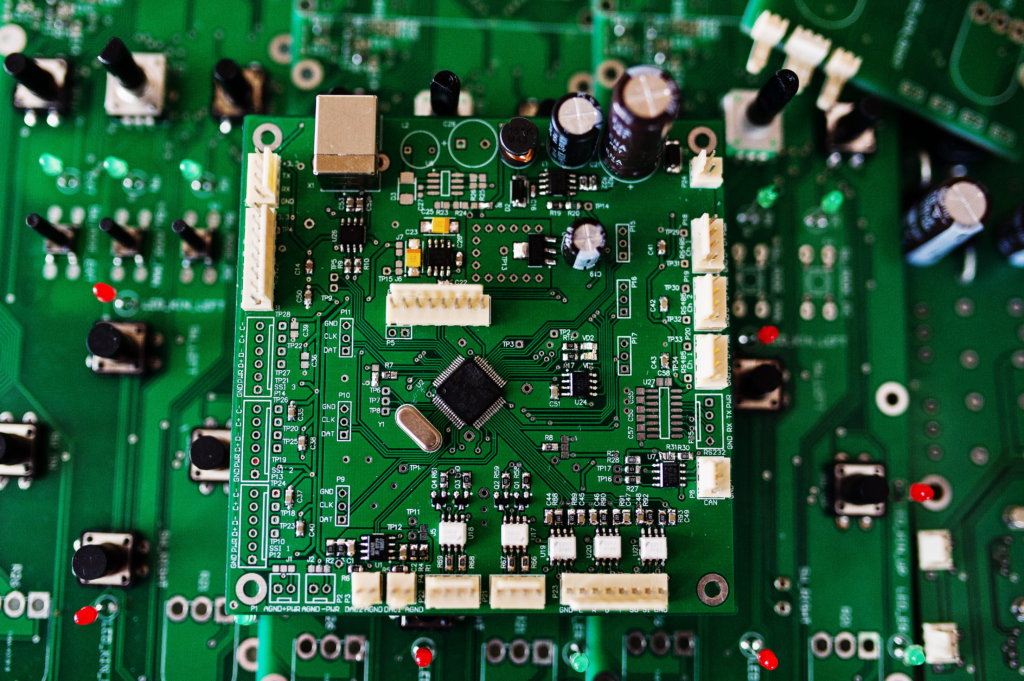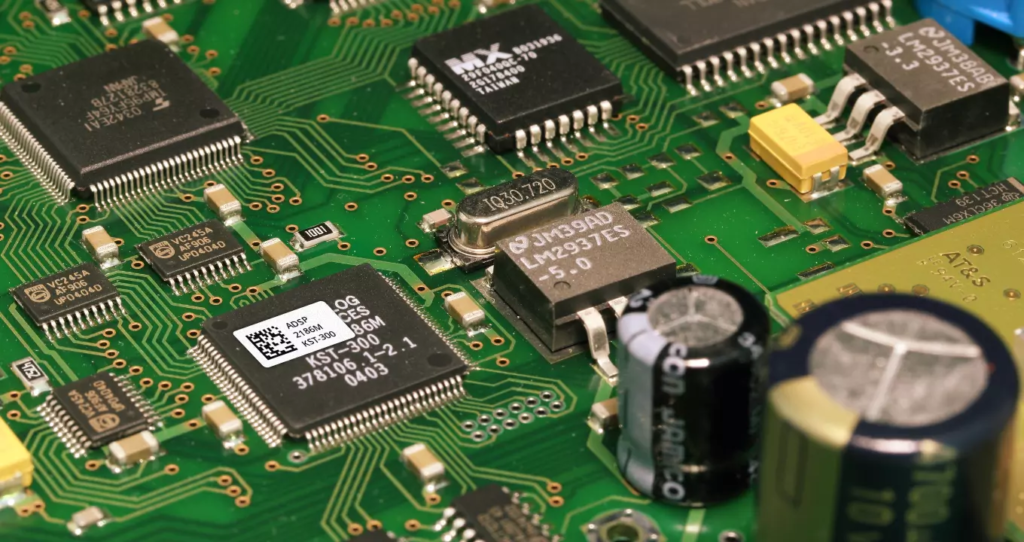How do Set-top box PCB ensure high-quality signal reception and output?
Set-top box PCBs play a crucial role in modern entertainment systems, ensuring high-quality signal reception and output. They enable users to access digital television, cable TV, satellite channels, and streaming services. The PCB, a key component inside a set-top box, is responsible for routing electrical signals and facilitating smooth communication between components such as processors, memory, and connectors. A high-quality set-top box PCB ensures the device receives and outputs the best possible signals, providing an enhanced viewing experience. In this blog post, we will delve deeper into the importance of the set-top box PCB in ensuring high-quality signal reception and output.
Reduce Signal Interference to Ensure Signal Integrity
The design of the Set-top box PCB is crucial to ensuring that the device can receive high-quality signals from external sources, such as antennas, satellite dishes, or cable networks. A well-designed PCB minimizes signal loss and interference, which is critical for precise and reliable signal reception. The layout of the PCB must be optimized to handle different signal frequencies, ensuring that each signal path is short and direct to avoid attenuation and distortion.
High-quality Set-top box PCBs feature precise routing of trace paths that carry analogue and digital signals. The design strategically places these traces to minimize electromagnetic interference (EMI) and crosstalk between circuits. Additionally, using high-grade materials, such as low-loss substrates and proper shielding, ensures that the PCB remains robust and reliable under varying environmental conditions. This level of design precision ensures that the STB can maintain strong signal reception, even in challenging signal environments, and provide users with high-definition (HD) or ultra-high-definition (UHD) output.

Signal Reception and Amplification Maintain Clarity
Set-top box PCBs receive external signals and convert them into a format that the TV or display can understand. To achieve high-quality reception, the PCB must integrate various components, including tuners, demodulators, and amplifiers, which are crucial for maintaining signal strength and clarity.
In satellite and cable systems, weak signals are often encountered due to distance from the source or interference from physical obstructions. To compensate for these weak signals, the Set-top box PCB includes amplifiers that boost the incoming signals. These amplifiers ensure the signal remains strong enough for further processing without introducing significant noise or distortion. A well-designed PCB will have a carefully selected amplifier that works efficiently across various frequencies, ensuring stable and high-quality reception, regardless of the signal source.
Minimizing Signal Interference with Set-top Box PCB
Signal interference is a common issue in set-top boxes, but advanced techniques in PCB design minimize such interference. This security in the quality of their devices reassures users that they can enjoy their entertainment without worrying about signal degradation.
One primary method for reducing interference is the use of shielding. Set-top box PCBs often incorporate metallic shielding or ground planes that prevent unwanted signals from contaminating the sensitive signal paths. The PCB layout optimizes the placement of high-frequency signal traces, keeping them away from noisy components like power supplies or processors. This careful routing helps prevent interference from other elements that could degrade the signal quality. Furthermore, the grounding system of the PCB provides a stable signal reference point, ensuring minimal noise during transmission.

Manufacturing Materials for Improving Signal Quality
The materials used to produce set-top box PCBs ensure high-quality signal reception and output. The choice of PCB substrate material directly affects the board’s performance, particularly when handling high-speed digital and analogue signals. FR4, Rogers, and other high-frequency laminates are commonly used for their durability and low-loss properties.
FR4 is a widely used material in consumer electronics, balancing cost, performance, and durability. However, for high-performance set-top boxes, especially those supporting 4K UHD or HDR content, manufacturers may opt for advanced substrates such as Rogers materials, which offer superior signal integrity and lower loss at high frequencies. By using these specialized materials, manufacturers ensure that the Set-top box PCB can handle the high bandwidth requirements of modern entertainment systems, providing users with uninterrupted, high-definition video and audio.
Thermal Performance Management Maintains Optimal Signal Performance
Another essential factor that influences signal reception and output quality is the thermal performance of the set-top box’s PCB. Excessive heat can cause signal degradation and component failure, leading to interruptions in service or poor signal quality. To mitigate this, Set-top box PCBs incorporate thermal management techniques that dissipate heat efficiently and keep the temperature within optimal operating ranges.
Advanced PCB designs use materials with high thermal conductivity, such as copper or aluminium, to help dissipate heat from critical components. Heat sinks, thermal vias, and proper placement of high-power components also contribute to efficient thermal management. By maintaining a stable operating temperature, Set-top box PCBs ensure that the signal reception and output remain consistent and high-quality, even during extended usage.

How Set-top Box PCBs Ensure Quality Output
Once the Set-top box receives the signal, the PCB must process it and convert it into a format suitable for display on your TV or monitor. This process involves demodulating, decoding, and sometimes upscaling the signal. The Set-top box PCB includes various signal processors, such as demodulators, decoders, and image processors, which work in tandem to ensure that the final output is of the highest possible quality.
High-quality Set-top box PCBs include dedicated components for video processing, including advanced algorithms for reducing noise, enhancing colour accuracy, and improving contrast. These processors ensure that the signal is not only straightforward but also sharp and vibrant, delivering an immersive viewing experience. Additionally, the PCB design is optimized to handle high-definition and 4K signals, ensuring that even the most demanding video formats can be processed without lag or distortion.
The Future of Set-top Box PCBs
As entertainment technologies evolve, the demands on Set-top box PCBs will increase. With the rise of 4K UHD, HDR content, and immersive audio formats, manufacturers must continue to innovate and develop advanced PCBs that can handle higher bandwidths, more complex signals, and more powerful processors. Future Set-top box PCBs will likely incorporate even more advanced signal processing capabilities, such as AI-driven optimization for video and audio quality and improved integration with other smart devices in the home.
The ongoing development of 5G networks and the increasing adoption of streaming services will further challenge Set-top box PCB designs, requiring even faster data transfer rates and improved signal handling. As such, Set-top box PCBs will continue to evolve, ensuring that users always experience the highest-quality signal reception and output. Manufacturers are likely to incorporate cutting-edge materials, enhanced thermal management systems, and next-generation signal processing technologies to keep up with the demands of modern entertainment systems.

The Crucial Role of Set-top Box PCBs in High-Quality Signal Reception
Set-top box PCBs are fundamental in delivering high-quality signal reception and output. From their careful design and material selection to integrating advanced signal processing techniques, these PCBs ensure that users enjoy a seamless entertainment experience. Whether it’s boosting weak signals, minimizing interference, or processing 4K UHD content, Set-top box PCBs are designed to handle the complexities of modern signal transmission and display technologies. As consumer demands for higher-quality video and audio increase, Set-top box PCBs will continue to evolve, playing a crucial role in providing crystal-clear, uninterrupted content.

